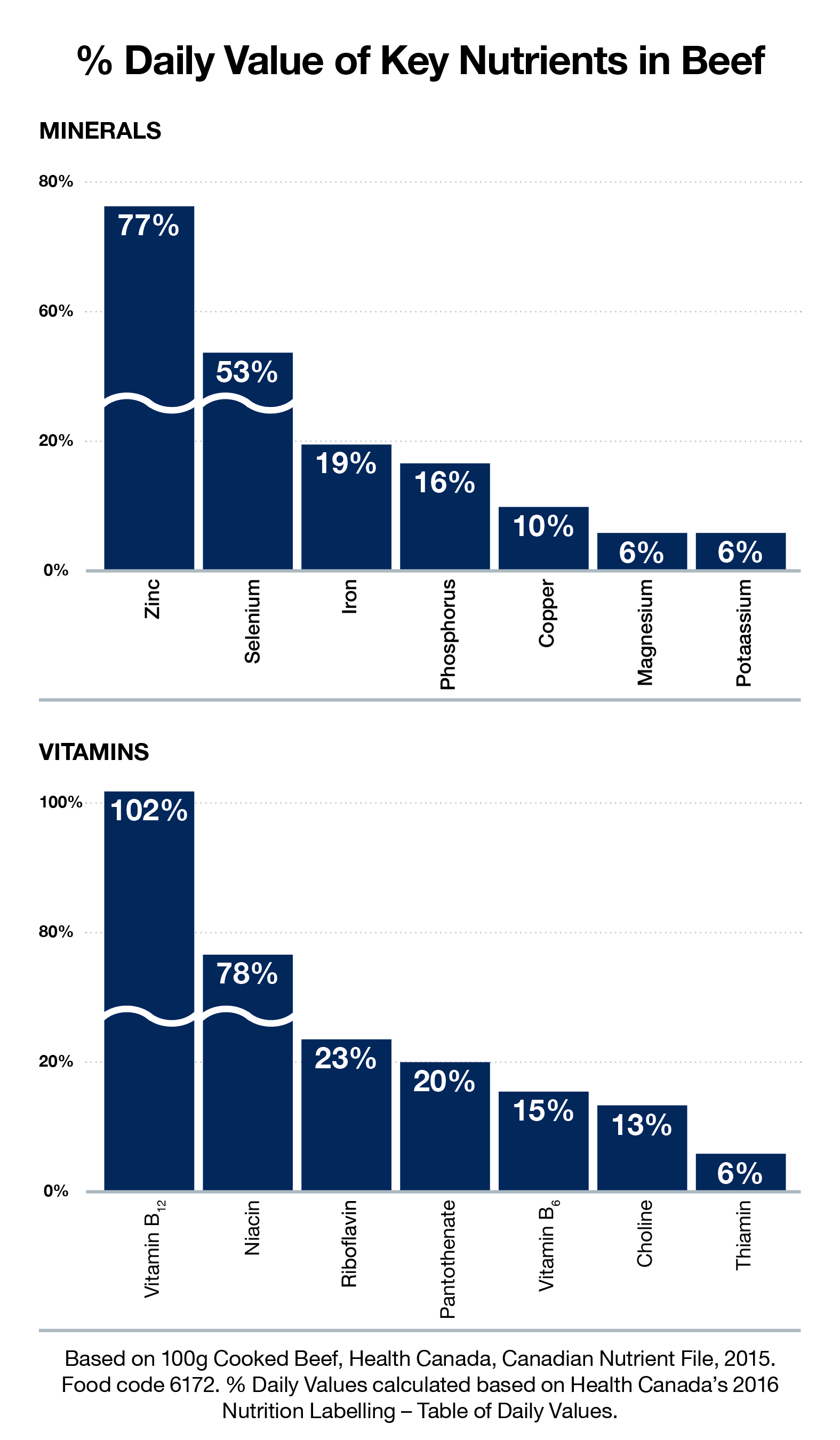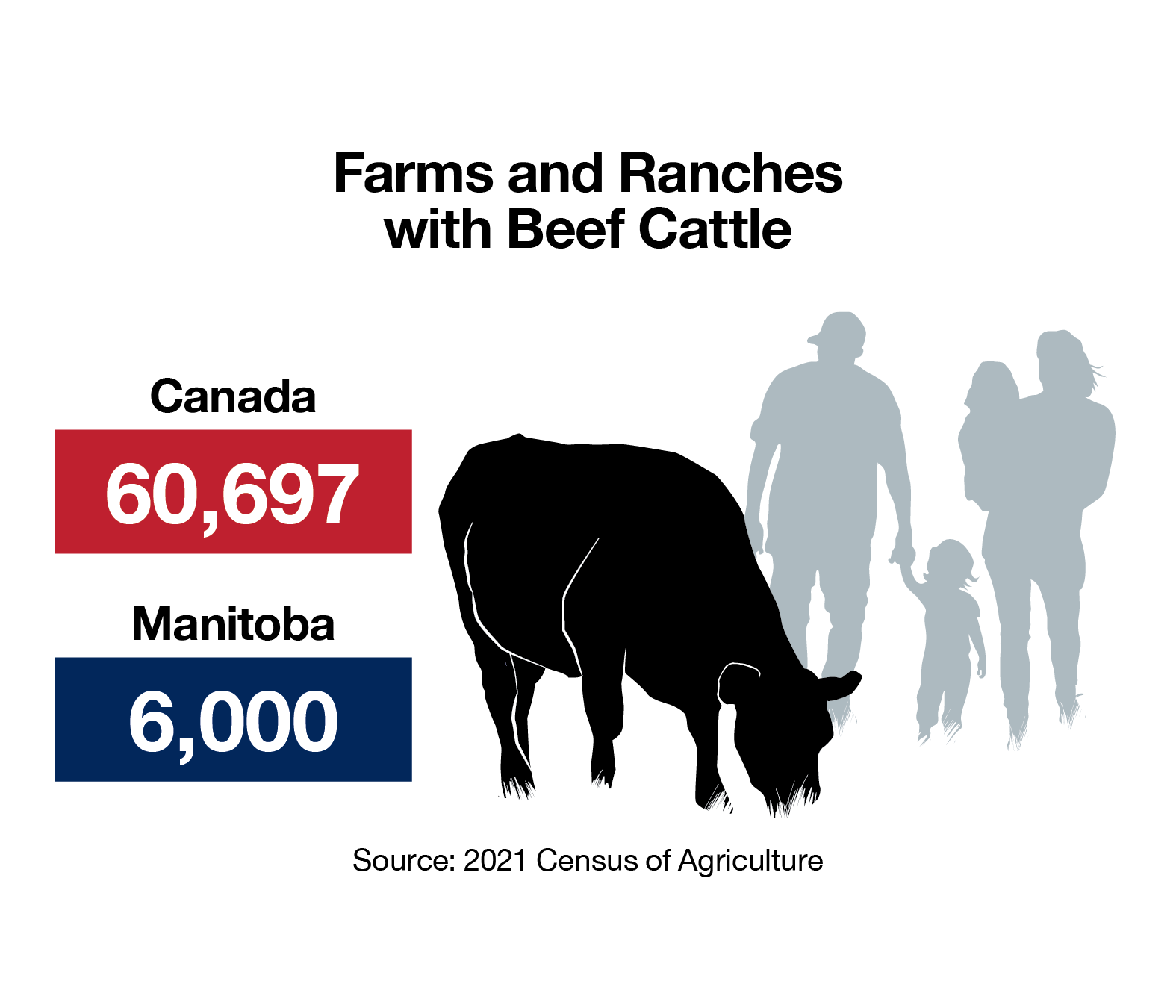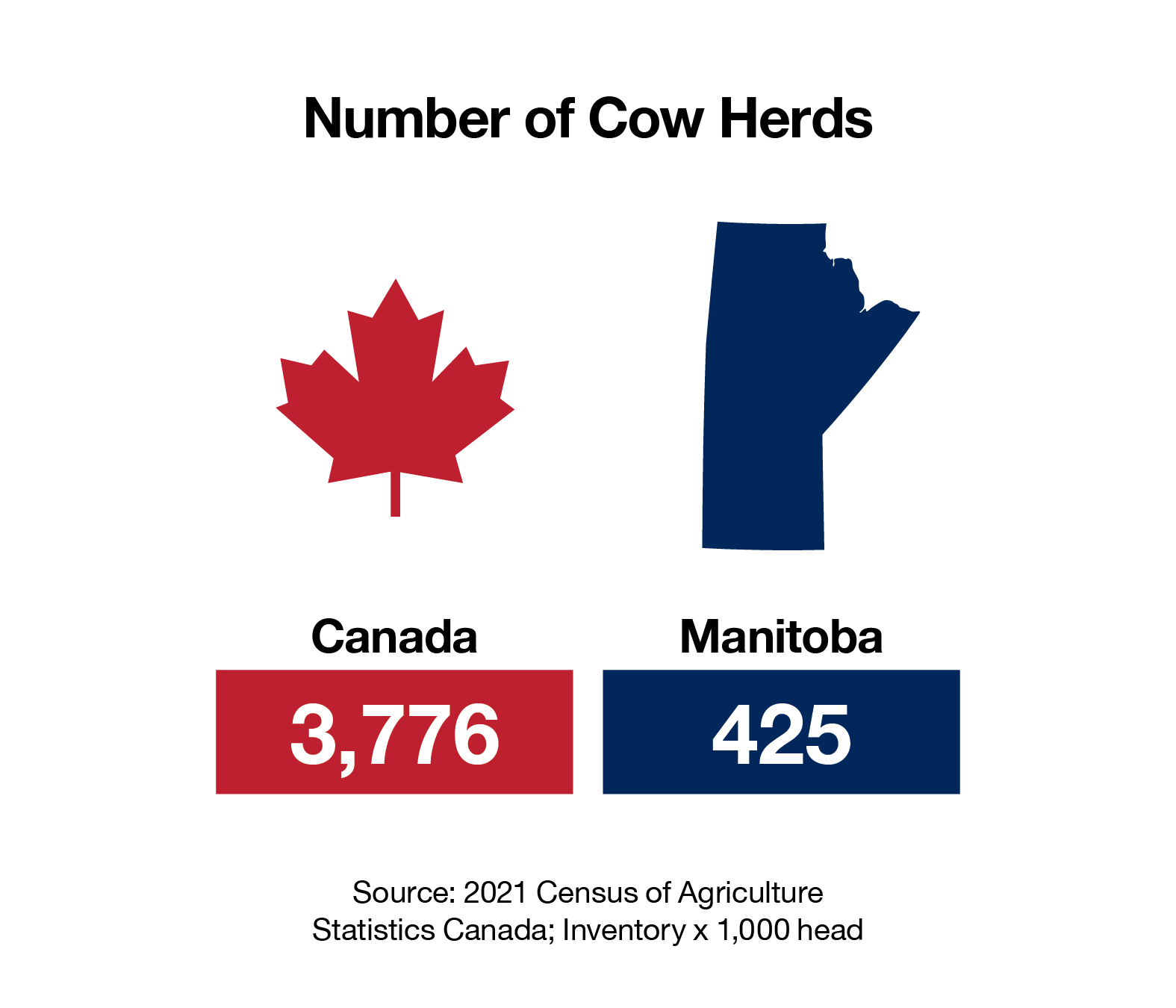ABOUT BEEF IN MANITOBA
This information is brought to you by Canada Beef, the national beef promotion organization, in partnership with the Manitoba Beef Producers that represent the beef cattle producers in our province.
Our Farmers and Ranchers
Canada Beef represents a community of over 60,000-strong beef farming and ranching families across the country. After almost 150 years since the beginning of our industry, Manitoba farmers and ranchers continue to use the people and resources of this province to make Manitoba beef the product that it is today. Did you know there are three main stages of raising cattle, starting with cow-calf farming/ranching, feeding farms and harvesting and producing of beef. These stages all require various businesses, farmers, and ranchers, and each one plays a distinct role to bring you the delicious Manitoba beef that you enjoy.
Cow-Calf Farming and Ranching
All cattle are raised by grazing in the pasture on cow-calf farms and ranches, found across Canada, as our country provides the ideal environment. These dedicated farmers and ranchers maintain a herd of cows that give birth to calves once a year. When a calf is born, it typically weighs 60 to 100 pounds.
CLICK FOR MORE
Feeding Farms
After grazing on open pastures, cattle are often moved to feeding farms, where they are fed a diet containing grain. This period, before an animal goes to market is called finishing. In Canada, cattle typically spend between 60-200 days at a feeding farm. Animals are kept in pens which makes it easier to provide feed and monitor their health.
CLICK FOR MORE
Beef Production
After the feeding stage and the cattle have reached market weight (typically 1,400 to 1,500 pounds), they are transported by trucks to a regulated facility for processing into beef products. Click here to learn more.
CLICK FOR MORE
Our Beef
Our great tasting and nutritious beef is produced by Manitoba farmers and ranchers. World class cattle genetics, careful attention to animal care combined with long experience and tradition helps us to deliver a product that is truly exceptional. Manitoba farmers and ranchers work hard to bring you this delicious beef with the knowledge that the land we depend on must be preserved, through responsible environmental stewardship, for the next generation –and beyond.
Nutrition
Did you know beef fits into a healthy diet. Delicious and nutritious, beef is a meal maker full of nutrients with goodness in every bite. Ground beef, steaks, roasts, all beef are not only tasty, but they are also an excellent source of protein. Beef is one single ingredient. There’s nothing added and nothing taken away. And like other meats, beef is a complete protein. It has the full set of amino acid building blocks your body needs to help maintain muscle, repair tissue, and build antibodies.
CLICK FOR MORE
Marbling
Canadian beef is not just a favourite here at home, it’s also sold around the world. Have you ever wondered what makes it so tasty? Marbling is one key aspect and refers to the specs of white fat within the lean meat. The amount of marbling contributes to the juiciness, tenderness, and flavour of our beef.
CLICK FOR MORE
% Daily Value of Key Nutrients in Beef
Source: 2021 Census of Agriculture
 Source: 2021 Census of Agriculture
Source: 2021 Census of AgricultureOur Contribution
By choosing Canadian beef, you are supporting your rural neighbours and Canada’s economy. There are beef farmers and ranchers in our province, striving to bring good food to your table and working to be good stewards of both the land and animals in their care. It takes commitment from hard working farmers and ranchers to keep our Manitoba cattle industry moving forward. However, the results are worth it. This industry provides our province with a lot more than just a delicious steak or roast. Did you know...
Average Number of Beef Cows on Farms and Ranches
 Source: 2021 Census of Agriculture
Source: 2021 Census of AgricultureFarms and Ranches with Beef Cows
 Source: 2021 Census of Agriculture
Source: 2021 Census of AgricultureNumber of Cow Herds
 Source: 2021 Census of Agriculture. Statistics Canada; Inventory x 1,000 head. Percentages may not add to 100% due to rounding
Source: 2021 Census of Agriculture. Statistics Canada; Inventory x 1,000 head. Percentages may not add to 100% due to roundingFull-Time Equivalent Jobs Provided by the Cattle Industry
 Source: 2021 Census of Agriculture
Source: 2021 Census of Agriculture